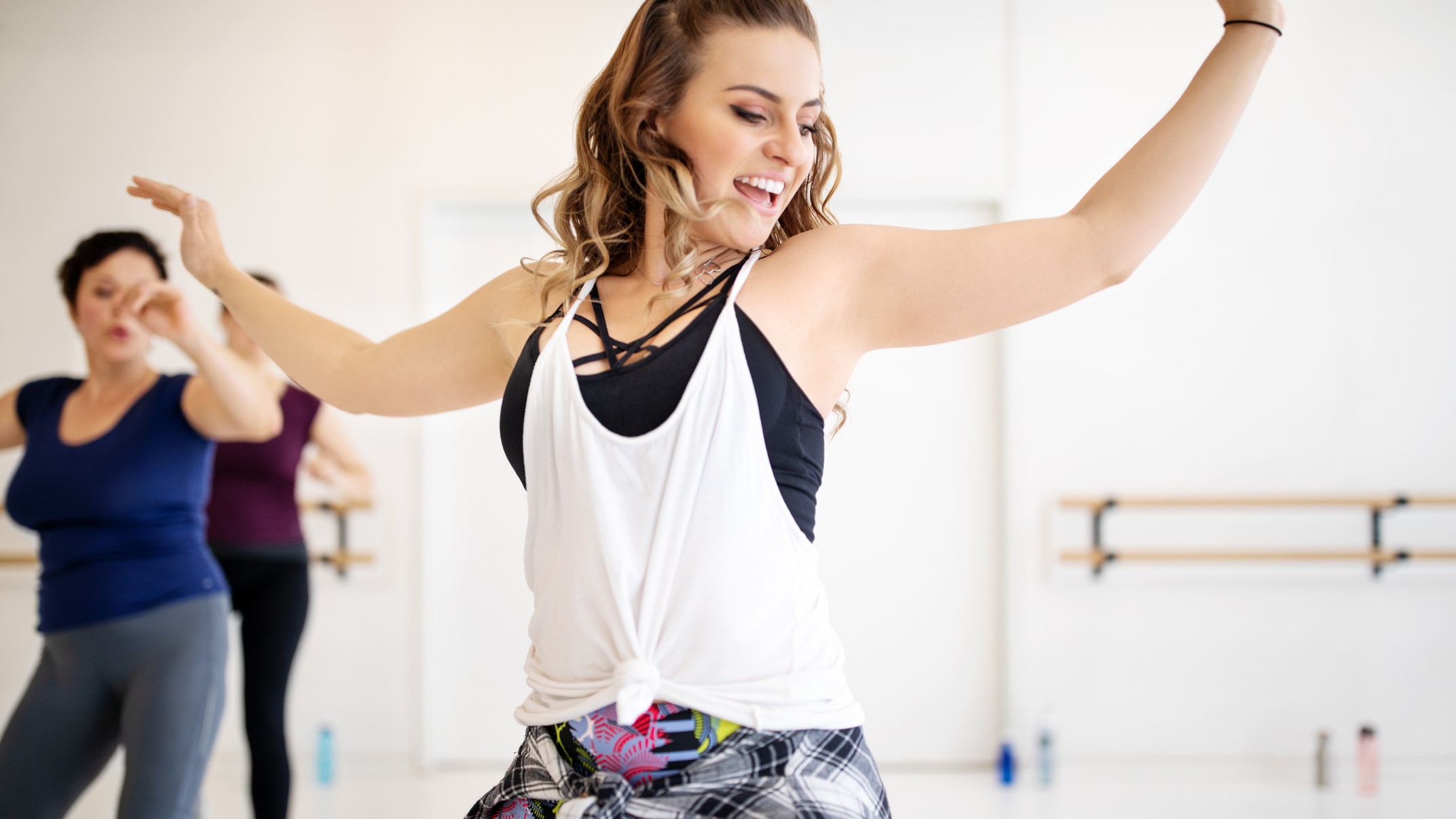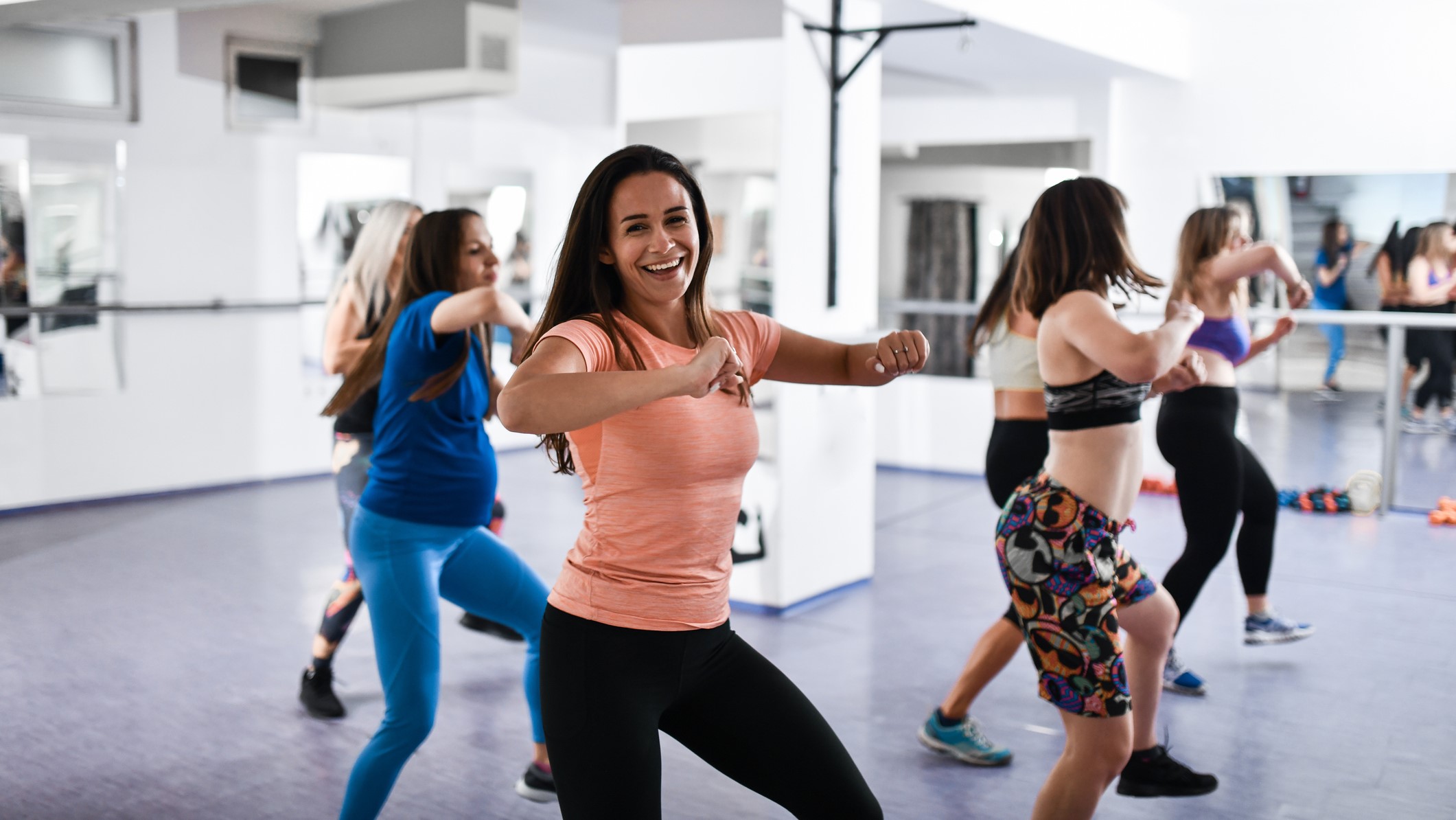I did a Zumba dance workout every day for a week — here’s what happened
Cardio getting stale? Try hitting the dance floor

Many of us find cardio to be the most boring part of a fitness routine, and with good reason — hopping on a treadmill or stationary bike to nowhere isn’t exactly the most stimulating activity. Cardio doesn’t have to be monotonous, though. There are plenty of ways to get your heart rate up while having some fun at the same time, and Zumba dance workouts are one of them.
Zumba is a dance-fitness hybrid that combines Latin-inspired moves with an interval-based, full-body cardiovascular workout. Launched in 2001, it quickly soared in popularity thanks to its easy-to-follow choreography, wide-ranging accessibility, and high-energy soundtrack.
Aficionados claim that Zumba feels more like a dance party than a workout, often turning life-long couch potatoes into avid exercisers. But just because it’s fun doesn’t mean it’s not efficient — you can master the salsa and the merengue while torching some calories in the process. And unlike a lot of cardio options, Zumba doesn’t require a big, expensive piece of equipment to do — just a screen and some floor space.
Even though I tend to enjoy cardio, my usual treadmill runs and stair-climbing sessions have been getting rather dull lately. I decided to try Zumba dance workouts every day for a full week instead to add a little spice to my routine.
There’s certainly nothing wrong with a daily dose of cardio (it’s recommended, in fact), but I suggest varying your activities and exertion levels. If a Zumba class leaves you feeling totally exhausted, choose a lower-intensity cardio workout the next day so that your body can fully recover.
What are the basic movements found in Zumba dance workouts?
Zumba choreography incorporates four rhythms: salsa, merengue, reggaeton, and cumbia. Let’s review the form for these basic steps.
Salsa
To perform salsa:
Sign up to get the BEST of Tom's Guide direct to your inbox.
Get instant access to breaking news, the hottest reviews, great deals and helpful tips.
- Stand with your feet about hip-width apart
- Step forward with your left foot, on the beat of the music
- Shift your weight back to your right foot
- Step your left foot back to the center, on the beat of the music
- Pause in the center for one beat
- Step behind you with your right foot, on the beat of the music
- Shift your weight back to your left foot
- Step your right foot back to the center, on the beat of the music
- Repeat the step on the other side when the choreography directs
Merengue
To perform merengue:
- Stand with your feet close together
- Shift your hips to the right and pick up your left foot
- Step your left foot back down, on the beat of the music
- Shift your hips to the left and pick up your right foot
- Step your right foot back down, on the beat of the music
Reggaeton
To perform reggaeton:
- Stand with your feet about hip width apart
- Take a wide step to your left, on the beat of the music
- Tap your right foot next to your left, leaning your body to the right
- Take a wide step to the right, on the beat of the music
- Tap your left foot next to your right, leaning your body to the left
Cumbia
To perform cumbia:
- Stand with your feet close together
- Pick up your left foot and tap it in front of you on the beat of the music, without shifting your weight.
- Take your left foot and place it behind you on the beat of the music, without shifting your weight
- Repeat the step with the left foot planted and the right moving when the choreography directs

I did a Zumba dance workout every day for a week — here’s what happened
I’m an okay dancer when I’m doing my own thing, but I was curious to see if I would be able to pick up the choreography of a Zumba dance workout. My goal was to complete 30-minutes of Zumba every day for seven days straight. There are plenty of free options on YouTube, so I didn’t need to find a live class or purchase any subscriptions. Here’s what I found:
It was easier to follow than I expected…
It’s been a long time since I’ve been in an actual dance class (and even then I was usually two steps behind everyone else), so I was somewhat apprehensive about nailing the dance moves well enough to keep up and get a sufficient workout.
I was pleasantly surprised at how easily I followed the choreography, with relatively little time. Once I got to the third day of my week, I wasn’t concerned with “keeping up” anymore — even with new videos, new steps, and different instructors.
What really helped was that movement blocks were repeated, so if I didn’t perfect it on the first go around, I had several more chances to get it right. I also found it helpful that instructors like TaNA Zumba counted down and gave directional cues with her fingers, so that I’d know what was coming next. This made it easy to get a rhythm going and stay moving throughout the entirety of the workout.
…but I felt a little awkward doing it
Despite having a solid grasp of the movements by day three, I still kind of felt like the drunk aunt at a wedding who’s had too many margaritas. There wasn’t much flair or finesse in my steps, but I’m sure that’s something that comes with more than a week’s worth of practice.
Of course, performing the choreography with finesse isn’t really the point — it’s getting a good workout while having fun at the same time. Regardless, my ego would probably keep me from joining a public Zumba class anytime soon.
My heart rate surprised me
Being a high-intensity cardio junkie, my heart rate very frequently gets into anaerobic zones (aka, my heart beats quickly). I was quite skeptical that something like Zumba would push me beyond “slightly breathless” — I figured I’d get to the same exertion levels as I do when I go for a fast walk or opt for a low-intensity cycling class.
While some of the Zumba workouts I chose were definitely lower-intensity (but still enjoyable), my day four class was more taxing — my Apple Watch clocked my heart rate at about 150 beats per minute at certain points. For me, that’s equivalent to a heavy-resistance, high-incline elliptical workout. It wasn’t the same as running sprints or a fast-paced Stairmaster program, however, it was a lot more cardiovascularly challenging than I initially anticipated.
I was sore at first
I exercise in some form every day, so it’s rare that my muscles get sore (and as a reminder — muscle soreness isn’t an indicator of a good workout). But after the first day of Zumba, I noticed that my shoulders and inner thighs were a bit achy the next morning.
When I do get sore, it’s usually because I’ve increased weight or intensity on certain exercises, or I’ve tried a new activity. Since this was my first foray into Zumba, my slight soreness wasn’t a total shock. And as I expected, that soreness diminished by day three and didn’t return for the remainder of the week.
The verdict? I enjoyed my week of reggaeton and cumbia-fueled cardio, but I probably won’t be incorporating any Zumba dance workouts into my regular routine — I just prefer the higher intensity found in running and other more traditional forms of cardio. However, Zumba will be a great option for when I’m traveling and don’t have access to a gym.
More from Tom's Guide
- Forget planks or crunches — these 5 standing core exercises will torch your abs
- I tried this 20-minute barre workout — and was surprised by the results
- I did 50 standing oblique crunches every day for a week — here’s what happened to my abs
Jennifer Rizzuto is a freelance writer and certified personal trainer based in Long Island, NY. She covers various fitness-related topics and reviews for Tom's Guide. She also writes sketch comedy and short films, and performs frequently as an actor, singer, and improviser. When she's not writing, working out, or performing, you'll find her trying to convince her husband to get a dog.

